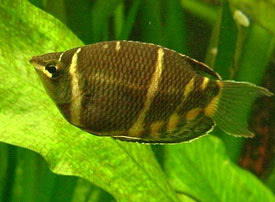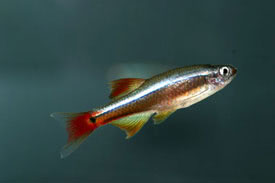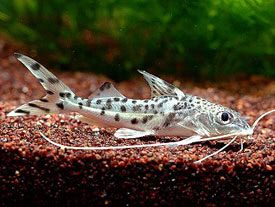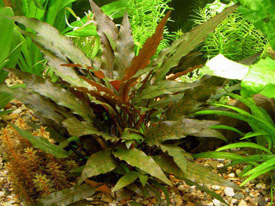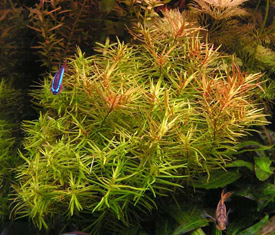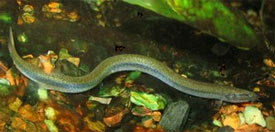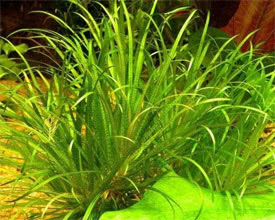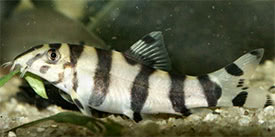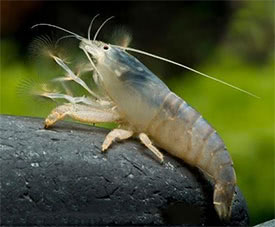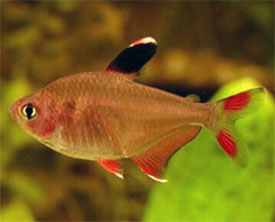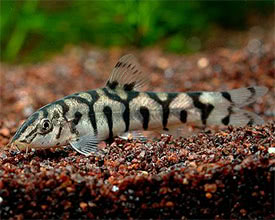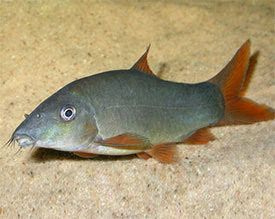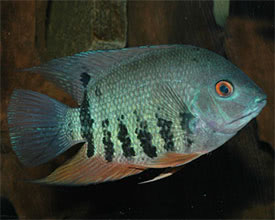
 Magyarul / Hungarian
Magyarul / Hungarian




- Scientific name: Nannostomus marginatus
- Synonyms: Nannostomus marginatus picturatus (Hoedeman, 1954)
- Common name: Dwarf Pencilfish
- Group: Characins
- Distribution: South America; Guyana, Suriname, Peru, Colombia, Brazil, Venezuela.
- Size: 3 cm
- Biotope: They inhabit the slow-flowing rivers, swamps and the flooded forest areas.
- Social behavior: A very peaceful schooling fish, but because of its small size and rather timid nature, it is not an ideal community fish. Can be kept with other similarly-sized, peaceful fish, or they can be ideal dither fish for dwarf cichlids, as they swim in the upper regions of the tank.
- Diet: Omnivorous; A micropredator feeding on tiny invertebrates and other zooplankton in nature. In the aquarium they will eat all kinds of small live, frozen and dry foods.
- Breeding: Quite hard
- Tank: Minimum 50 litres
- Population: 5-6 fish for 50 litres
- Decoration: They should be kept in heavily-planted aquarium with a dark substrate. Floating plants and driftwoods or roots, where the fish can hide, can help them to display natural behaviours and also help to reduce skittishness.
- Temperature: 22-28 °C
- pH: 5.8-7.5
- Hardness: 2.0-12.0 dGH
- Lifespan: 4-8 years
Adult males are more slender than females, and in one form from the rio Negro males possess a modified anal-fin with the third to sixth rays being thickened.
As many other characins, the Nannostomus marginatus is also an egg-scattering free spawner fish, exhibiting no parental care. For breeding a small separate tank is enough that should be filled with soft (2-3 dGH), slightly acidic water. Fill the bottom of the aquarium with a few clumps of fine-leaved plants such as java moss, or with fine wool mops where the females can depostit the eggs. Feed the adults with plenty of live and frozen foods before spawning to bring them into good condition. Lighting is not necessary, and a small sponge filter is enough. They can be spawn in pairs or in a small group, but the more individuals involved the greater the risk of egg predation. They lay up to a hundred, rather large eggs. The parents can be removed from the aquarium after 2-3 days. The eggs hatch after 1 or 2 days. If using mops, an alternative method is to check them on a daily basis, removing and replacing them as you find eggs and hatching the fry elsewhere. The tiny fry can be fed with very small live foods or with liquid fry food for the first days, until they are large enough to accept brine shrimp nauplii. If all goes well in eight weeks the fry should be about 1cm (0.5in) and beginning to colour up.
https://www.fishbase.de/summary/Nannostomus-marginatus
http://www.seriouslyfish.com/species/nannostomus-marginatus
http://www.fishtanksandponds.co.uk/profiles/nannostomus-marginatus.html
https://www.aquainfo.org/article/nannostomus-marginatus-dwarf-pencilfish







